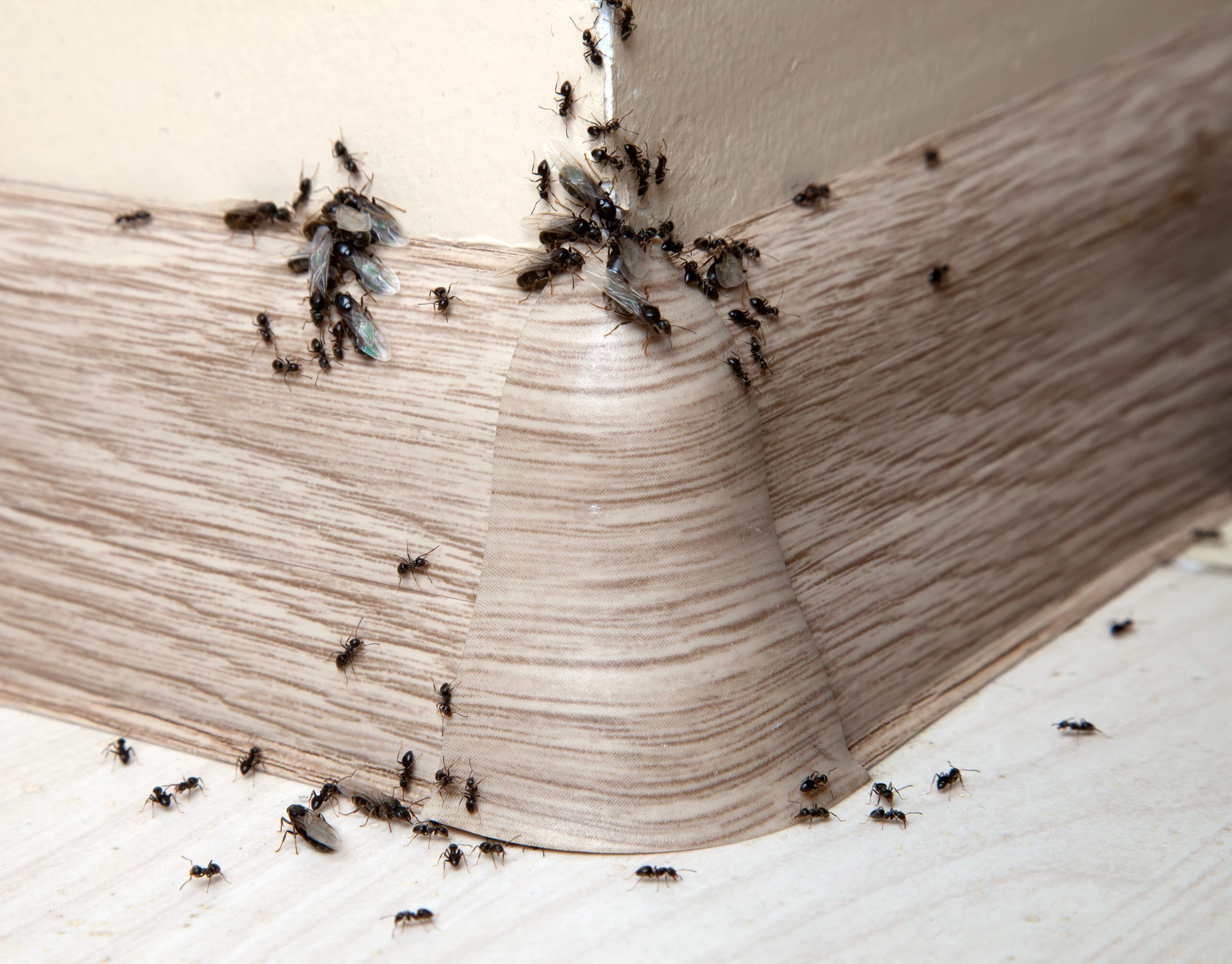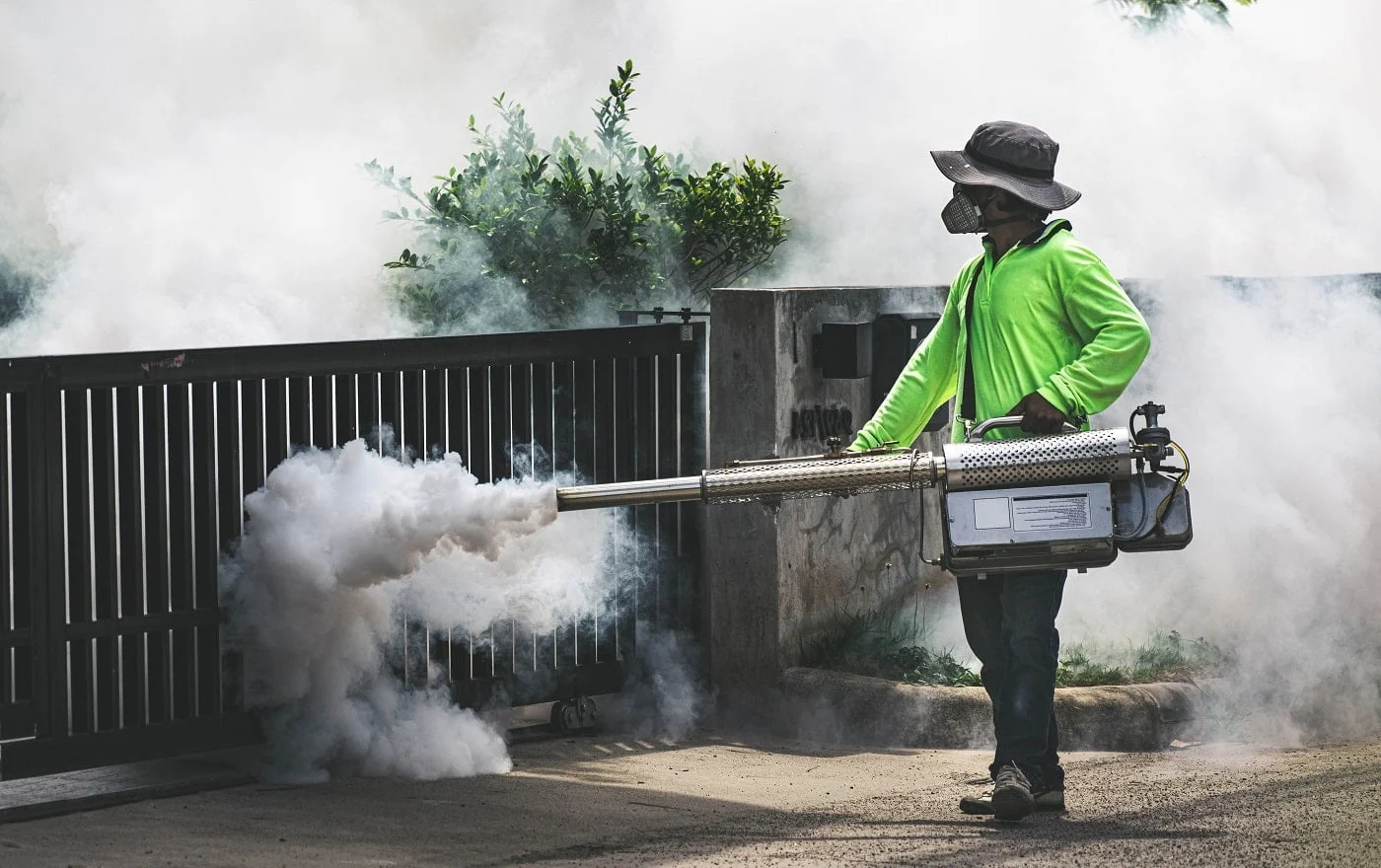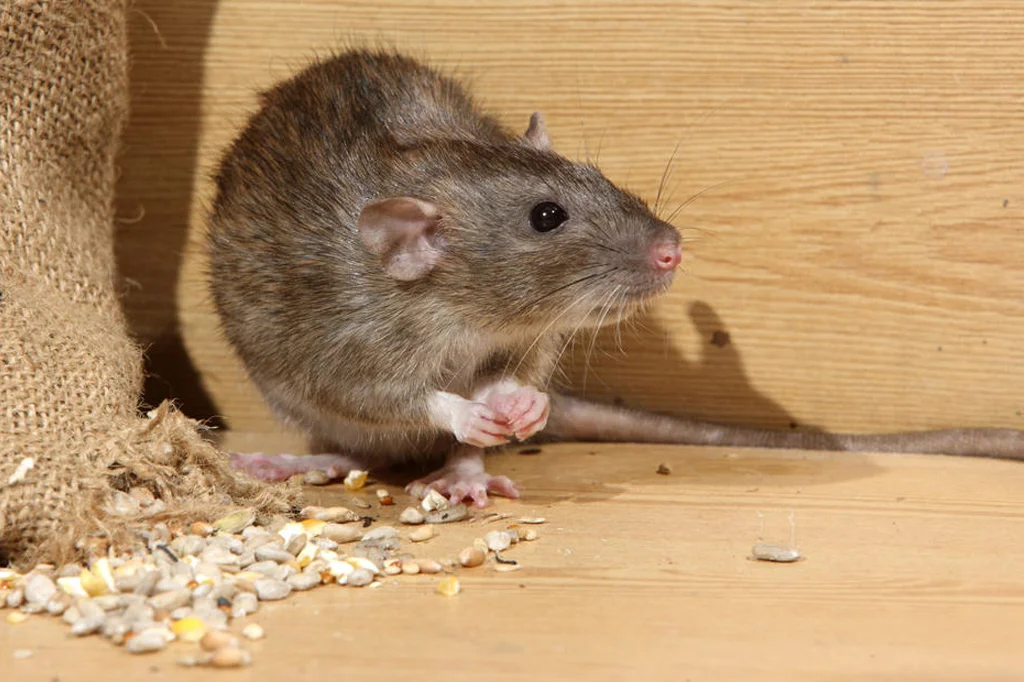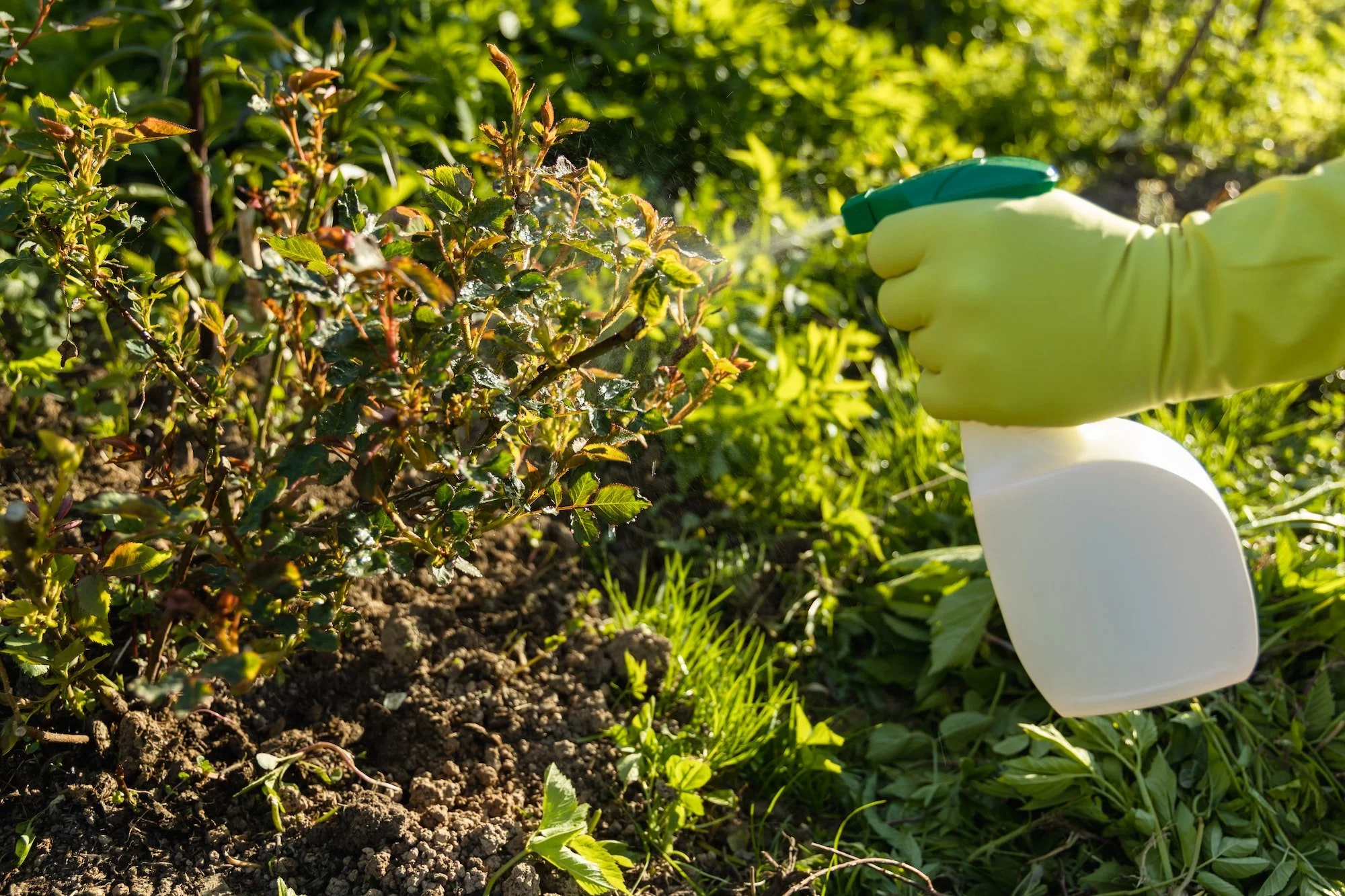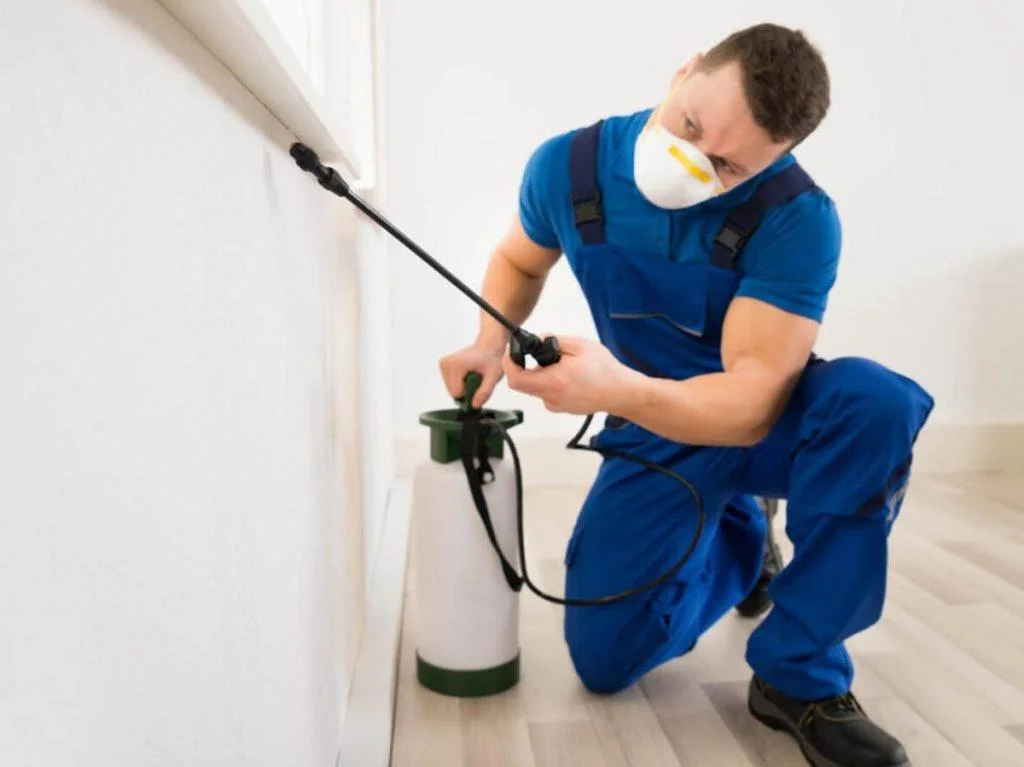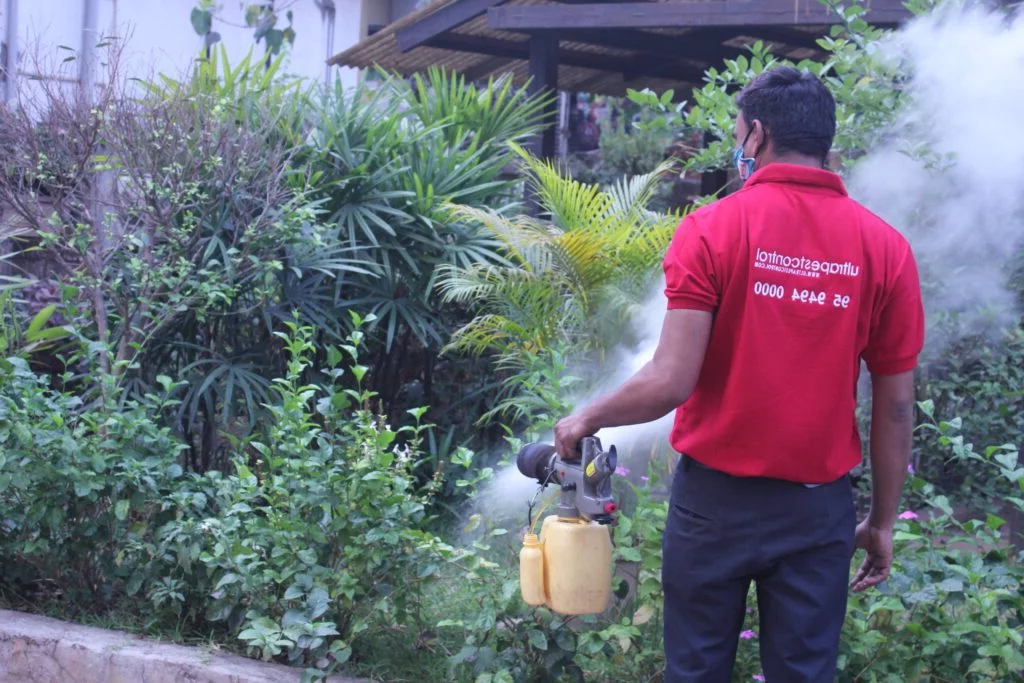From the shores of Lake Michigan and Superior to the rolling farmlands and northern forests, Wisconsin's diverse landscapes create unique pest management challenges. The state's continental climate with dramatic seasonal shifts—hot, humid summers and frigid, snowy winters—influences pest behavior and drives predictable activity cycles throughout the year. Professional pest control in Wisconsin requires understanding these regional factors – the Great Lakes influence, abundant waterways, agricultural heritage, and urban-rural interface all contribute to distinct pest pressures across the state.
Homeowners and businesses throughout Wisconsin face recurring challenges from pest infestations that can damage property, impact health, and disrupt daily life. That's why many residents rely on professional exterminators who understand the region's specific pest pressures. Local experts recognize that both preventive approaches and targeted treatments are essential to maintaining pest-free properties in Wisconsin's seasonal climate. In this guide, we'll explore common Wisconsin pest problems, effective management strategies including eco-friendly pest solutions, and why partnering with local professionals offers the most reliable protection for your home or business.
Dealing with a pest problem? Our Wisconsin team provides
emergency pest control
24/7 and comprehensive
pest inspections to protect your property.
Contact us for prompt, reliable service!
Pest Control Challenges Specific to Wisconsin
Wisconsin's unique environment creates distinctive pest control challenges that require specialized knowledge and approaches. Here's why pest control in Wisconsin demands tailored solutions:
-
Extreme temperature fluctuations Wisconsin experiences some of the nation's most dramatic seasonal temperature swings, with summer highs regularly reaching the 90s and winter lows plummeting well below zero. These extremes drive intense pest cycles, with warm-season insect reproduction followed by mass movement of pests seeking indoor shelter as temperatures drop. The state's relatively short transition seasons—spring and fall—often compress pest activity into intense periods, requiring precisely timed preventive treatments and different management approaches throughout the year.
-
Great Lakes influence The moderating effect of Lakes Michigan and Superior creates distinct microclimates in coastal communities from Kenosha to Superior. Lake-effect moisture supports different pest populations than inland areas, while temperature buffering can extend activity seasons for certain species. Lakefront properties often experience unique challenges with moisture pests, midges, and seasonal invaders influenced by proximity to these massive water bodies. Even communities several miles inland can experience lake-influenced pest patterns not seen in the state's central and western regions.
-
Agricultural landscape Wisconsin's strong agricultural heritage and extensive farmland create distinctive pest dynamics that affect both rural and urban communities. Grain storage and dairy operations support rodent populations that may seek shelter in nearby structures. Crop rotations and agricultural practices influence insect movement patterns, while fertilizer use can affect soil-dwelling pests. Even urban residents often experience spillover effects from agricultural pest pressure, particularly in communities like Madison, Green Bay, or Eau Claire where development meets farmland.
-
Abundant water features With over 15,000 lakes and 84,000 miles of rivers and streams, Wisconsin properties frequently exist near water bodies that support mosquitoes, midges, and various moisture-dependent pests. Waterfront properties on popular recreational lakes in northern Wisconsin, along the Mississippi River, or near the Wisconsin River system face heightened seasonal pressure from biting insects and moisture pests. Even inland properties with small ponds, streams, or seasonally wet areas experience different pest challenges than drier sites.
-
Northern forest invasives Northern Wisconsin's extensive forests face increasing pressure from invasive pests like emerald ash borer, gypsy moth, and spotted lanternfly that threaten both native ecosystems and residential landscapes. Properties in forested areas often experience the first wave of these invasions, requiring specialized identification skills and management protocols for these non-native species. Even urban communities with street trees and parks face growing challenges from these forest pests as they expand their range across the state.
These factors make informed, season-appropriate pest prevention particularly important for Wisconsin property owners. Professional pest management companies familiar with these regional challenges can develop customized strategies that address Wisconsin's specific environmental factors while protecting your property throughout the year.
Common Pests in Wisconsin
Wisconsin's diverse environments support a variety of persistent pests. Here are the most common invaders that Wisconsin homes and businesses encounter:
Carpenter Ants
Carpenter ant inspection in a Madison home
Carpenter ants rank among Wisconsin's most destructive wood-damaging pests, particularly in northern forested regions and near water bodies throughout the state. Unlike termites, carpenter ants don't eat wood but excavate moist or decaying wood to create nesting galleries, potentially causing significant structural damage over time. Wisconsin's abundance of trees, especially in the northern counties, provides natural habitat for these insects before they move into structures.
Professional carpenter ant management begins with thorough inspection to locate parent and satellite colonies, which may be inside walls, under insulation, in attic spaces, or in nearby landscape features like stumps and logs. Treatment typically combines direct application to identified nests, targeted perimeter protection, baiting programs, and—crucially for Wisconsin properties—recommendations to address moisture issues that attract and support colonies. For homes in particularly susceptible areas like wooded lake properties or older homes in established neighborhoods, seasonal preventive maintenance provides the most reliable long-term protection.
Mosquitoes
Mosquito treatment in a Milwaukee suburban property
Wisconsin's abundant lakes, rivers, and wetlands provide ideal breeding habitat for numerous mosquito species that create seasonal challenges throughout the state. Beyond the significant nuisance factor that can make outdoor activities uncomfortable during summer months, mosquitoes in Wisconsin have been found carrying West Nile virus and other disease organisms that can impact human and animal health. Areas near water bodies, properties with poor drainage, and regions with seasonal flooding often experience particularly heavy mosquito pressure.
Effective mosquito control for Wisconsin properties typically combines eliminating or treating standing water when possible, applying targeted barrier treatments to vegetation where adult mosquitoes rest, and implementing comprehensive habitat management recommendations. For properties near lakes, rivers, or wetlands, regular protective treatments throughout the summer season (typically May through September) provide the most consistent relief and allow families to enjoy Wisconsin's beautiful outdoor spaces without constant mosquito harassment.
Rodents
Rodent exclusion work in Green Bay
Wisconsin's cold winters drive significant rodent pressure on homes and businesses as mice and rats seek shelter from freezing temperatures. House mice are the most common indoor invaders statewide, while Norway rats frequently infest properties in urban areas like Milwaukee, Madison, and Green Bay. In agricultural regions and properties near grain storage facilities, field mice and deer mice often move indoors during harvest disruption and as temperatures drop in fall.
Professional rodent control requires a comprehensive approach that adapts to seasonal pressures. Effective management typically combines thorough exclusion work to seal entry points (particularly important before winter), strategic placement of monitoring and control stations, removal of attractants, and ongoing maintenance to prevent reinfestation. For many Wisconsin properties, fall prevention measures provide essential protection before winter weather drives increased rodent invasion pressure. For seasonal properties like lake cabins in northern counties, specialized protection during vacant periods helps prevent damage from rodent activity when owners are absent.
Cluster Flies and Overwintering Pests
Wisconsin's cold winters trigger predictable invasions of various overwintering pests seeking shelter before temperatures plummet. Cluster flies, boxelder bugs, Asian lady beetles, and western conifer seed bugs commonly enter homes and buildings in fall, hiding in wall voids, attics, and other protected spaces until warm days trigger activity. These seasonal invaders don't cause structural damage but create significant nuisance issues when they emerge indoors during winter warm spells or as spring approaches.
Effective management of overwintering pests requires preventive treatments before they enter structures. Professional applications to exterior walls, eaves, and potential entry points in late summer and early fall create barriers that significantly reduce invasion numbers. For properties with recurring problems, comprehensive exclusion work to seal potential entry areas provides additional protection when combined with timely preventive treatments. Once these pests have entered wall voids and attic spaces, control becomes more challenging, making preventive approaches the most effective strategy for Wisconsin homes.
Ticks
Wisconsin consistently ranks among states with high Lyme disease incidence, making ticks a significant health concern throughout much of the state. Blacklegged ticks (deer ticks), American dog ticks, and lone star ticks pose threats to both residents and visitors, particularly in wooded areas, along trail edges, and in tall grass habitats. Beyond Lyme disease, these parasitic pests can transmit anaplasmosis, babesiosis, and other serious tick-borne diseases that have been documented in Wisconsin.
Professional tick management focuses on treating vegetation where ticks quest for hosts, particularly in yard areas where human-tick encounters are most likely. Effective programs typically combine habitat modification recommendations (maintaining landscaped barriers between wooded areas and lawns, keeping grass short, removing leaf litter) with targeted applications during peak activity seasons. For Wisconsin properties near wooded areas or with high deer activity, regular treatments throughout the warm season (typically April through October) provide the most reliable protection against these dangerous parasites.
Eco-Friendly Pest Control Approaches
With Wisconsin's strong outdoor traditions and abundant natural resources, many residents and businesses prioritize eco-friendly pest solutions that effectively address pest problems while minimizing environmental impact. Modern integrated pest management (IPM) approaches provide effective control with reduced reliance on chemical treatments. This comprehensive strategy combines inspection, monitoring, habitat modification, exclusion, biological controls, and targeted applications of reduced-risk products only when necessary.
Many Wisconsin pest control providers now offer green service options that provide effective pest management while protecting the environment. These programs often utilize botanical insecticides derived from plant oils, microbial products that target specific pests, mechanical controls like traps and exclusion features, and highly targeted applications that minimize impact on non-target organisms. For properties near sensitive areas like lakes, rivers, organic farms, or protected habitats, these eco-friendly approaches help maintain effective pest control while protecting Wisconsin's precious natural resources.
Wisconsin Watershed Protection
Our Wisconsin pest specialists are trained in lake-friendly practices that protect the state's beautiful waterways and recreational areas while still providing effective pest management for your property.
Below is a comparison of different eco-friendly pest management approaches commonly used in Wisconsin:
| Approach |
Benefits |
Best Applications |
| Physical Exclusion |
Prevents pest entry without chemicals; provides long-term protection; eliminates need for repeated treatments.
|
Rodent-proofing before winter, sealing entry points for overwintering pests in fall, preventing bat entry in summer cabins.
|
| Habitat Modification |
Reduces conditions that attract pests; provides sustainable long-term solutions; decreases need for product applications.
|
Mosquito reduction through standing water management, tick control through landscaping changes, rodent prevention through harborage reduction.
|
| Botanical Treatments |
Derived from plant compounds; typically lower toxicity; break down rapidly in the environment.
|
Perimeter treatments using plant-based ingredients, mosquito management near water bodies, treating near organic gardens.
|
| Targeted Baiting |
Minimal product use; focuses on specific pest colonies; reduced environmental exposure through contained delivery.
|
Carpenter ant control in wooded properties, rodent management with secured bait stations, yellow jacket reduction with protein baits.
|
| Biological Controls |
Uses natural enemies or targeted microbials; minimal environmental impact; sustainable for long-term management.
|
Mosquito management in standing water, garden pest control, specialized applications for landscape pests.
|
In Wisconsin's diverse environments—from urban Milwaukee to the northwoods of Vilas County—these eco-friendly approaches can be tailored to address specific pest challenges while protecting the state's natural resources. Professional pest management companies typically begin with a comprehensive inspection to identify the most environmentally appropriate solutions for each unique situation.
Residential vs Commercial Pest Control
Residential Pest Protection
Wisconsin homes face diverse pest challenges based on their location, architecture, and surrounding environment. Residential pest protection programs typically focus on creating defensive barriers while ensuring treatments are safe for families, pets, and the environment. Many Wisconsin homeowners opt for quarterly service plans that adapt to seasonal pest cycles, with additional attention during high-pressure periods like summer mosquito season or fall rodent and overwintering pest invasions.
From Milwaukee's historic neighborhoods to Madison's lakeside communities to rural farmhouses throughout the state, residential service begins with a comprehensive inspection that identifies current pest issues, potential vulnerabilities, and conditions that might attract pests. Treatment plans are then customized for each property, taking into account specific construction features, landscape characteristics, and regional pest pressures. For vacation properties in northern lake regions or along the Mississippi River, specialized programs address the unique challenges of seasonal occupancy and wilderness proximity.
Commercial Pest Control
Wisconsin businesses require specialized pest management that addresses industry-specific needs while meeting regulatory requirements. Commercial pest control programs are designed to protect reputation, prevent product contamination, and ensure compliance with health codes and industry standards. From Milwaukee's food processing facilities to Madison's healthcare providers to the dairy industry throughout the state, each business sector faces distinct pest management challenges requiring tailored approaches.
Commercial service typically involves more comprehensive documentation, including detailed service reports, monitoring device placement maps, and trend analysis to identify and address emerging issues before they become problems. Many Wisconsin businesses implement Integrated Pest Management programs that emphasize prevention through improved sanitation, exclusion, and structural modifications, with targeted treatments only when necessary. Wisconsin's food production, hospitality, healthcare, and manufacturing industries require particularly vigilant pest management to maintain quality standards and ensure regulatory compliance.
From residential pest protection plans to customized
commercial pest control solutions, we provide expert services throughout Wisconsin –
contact us today to protect your property!
Why Choose Local Wisconsin Pest Control Experts?
Working with pest control professionals who understand Wisconsin's unique challenges offers significant advantages. Here's why partnering with local experts provides better results for your home or business:
-
Regional expertise Wisconsin's geography creates distinct pest profiles across the state—from the Lake Michigan shoreline to the Mississippi River border to the northern forests. Local experts understand how pest behaviors, species distribution, and treatment effectiveness vary between Milwaukee's urban environment, Madison's lakes region, and the Northwoods. This regional knowledge leads to more accurate identification and more effective, targeted treatment strategies than standardized approaches from national companies unfamiliar with Wisconsin's unique environmental conditions.
-
Seasonal timing precision Wisconsin's dramatic seasonal changes significantly impact pest behavior and treatment effectiveness. Local experts understand the optimal timing for various preventive treatments—when carpenter ants typically emerge in spring, when mosquito populations peak in different regions, or when to apply overwintering pest treatments before fall invasions begin. This timing precision maximizes effectiveness while often reducing the total amount of product needed.
-
Localized microclimate awareness Wisconsin features numerous microclimates influenced by the Great Lakes, river valleys, and elevation changes that affect pest activity patterns. Local professionals understand these variations and how they impact pest management strategies in different areas—from the moderating lake effect along eastern counties to the colder conditions in northern highland regions. This detailed local knowledge allows for more precise treatment approaches tailored to specific microclimates.
-
Agricultural understanding With agriculture playing a central role in Wisconsin's economy and landscape, local pest experts understand the relationship between farming practices and pest pressure on residential and commercial properties. They can identify spillover effects from nearby fields, recommend appropriate timing relative to harvest or planting seasons, and provide solutions that protect both structures and agricultural interests when properties exist in farming communities.
-
Rapid response capability When facing urgent situations like stinging insect nests near entrances, carpenter ant infestations in lake cabins, or rodent intrusions, local providers can respond quickly with technicians familiar with your area. This rapid response capability is vital for emergency pest control situations that require immediate attention to protect family, employees, customers, or property.
By choosing local professional exterminators who understand Wisconsin's unique conditions, you get more effective, responsive service tailored to your specific pest challenges and property needs—all from providers who live in and understand the communities they serve.
Don't let pests threaten your Wisconsin property. Our local experts deliver effective pest control in Wisconsin with customized solutions –
schedule your inspection today!
Top Cities for Pest Control in Wisconsin
Different regions across Wisconsin face varying pest challenges based on their geography, development patterns, and local environments. Here are some key Wisconsin cities and the unique pest management challenges they face:
Milwaukee
As Wisconsin's largest city, Milwaukee experiences the full range of urban pest challenges, influenced by its Lake Michigan shoreline, industrial heritage, and diverse neighborhoods. The city's older areas like the East Side, Bay View, and Washington Heights feature historic homes where carpenter ants, rodents, and overwintering pest issues are common concerns. The Milwaukee River corridor and extensive park system create habitat for mosquitoes during warm months, while the port facilities and industrial areas support significant rodent populations requiring specialized urban management approaches. Lakefront properties experience different pest pressures than inland neighborhoods, with lake-effect moisture influencing pest activity patterns throughout the year. The city's revitalization efforts in areas like the Third Ward and Walker's Point have sometimes disturbed established rodent populations as development changes long-standing urban habitat patterns.
Madison
Madison's unique isthmus location between Lakes Mendota and Monona creates distinctive pest challenges influenced by extensive shoreline and urban density. The city's proximity to water supports significant mosquito and midge populations during warm months, particularly in neighborhoods near the lakes or wetland areas. Historic districts like Mansion Hill and University Heights feature older homes with unique pest vulnerabilities, while newer developments expanding into former agricultural land often experience different pest pressures as habitat is disturbed. The university campus and surrounding student housing areas face specific challenges with seasonal occupancy patterns and high-density living arrangements. The combination of urban environment, lakefront influence, and surrounding agricultural land creates a complex pest management landscape requiring diverse strategies across different neighborhoods and property types.
Seasonal Pest Guide for Wisconsin
Spring (March-May)
- Carpenter ants become active
- Tick activity begins as snow melts
- Cluster flies emerge from hibernation
Recommendation: Schedule carpenter ant inspection and implement perimeter protection before summer pest season.
Summer (June-August)
- Mosquitoes reach peak activity
- Stinging insect nests expand rapidly
- Tick populations thrive in outdoor areas
Recommendation: Maintain mosquito and tick treatments and monitor for wasp nests around structures.
Fall (September-November)
- Rodents begin seeking winter shelter
- Asian lady beetles and boxelder bugs invade
- Yellow jackets become more aggressive
Recommendation: Seal entry points and implement preventive treatments before overwintering pests move indoors.
Winter (December-February)
- Rodent activity intensifies indoors
- Overwintering pests emerge on warm days
- Stored product pests emerge in pantries
Recommendation: Focus on indoor pest management and maintain rodent control systems.
What Our Wisconsin Clients Say
"After discovering carpenter ants in our lakefront home near Eagle River, we were worried about potential structural damage. Their thorough inspection identified three satellite nests that previous companies had missed, and their comprehensive treatment eliminated the problem completely. Their knowledge of northern Wisconsin pest issues was impressive and reassuring."
- Michael S., Eagle River
★★★★★
"The mosquitoes around our Madison property made enjoying our backyard nearly impossible until we started their mosquito treatment program. Now we can actually use our outdoor space throughout summer without being eaten alive. Their environmentally sensitive approach was particularly important to us, given our proximity to Lake Mendota."
- Jennifer T., Madison
★★★★★
"As a restaurant owner in Milwaukee's competitive dining scene, pest prevention is absolutely critical. Their commercial service has maintained our spotless reputation through three health inspections. The detailed documentation they provide has been invaluable, and their discreet service never disrupts our customers."
- David L., Milwaukee
★★★★★
Frequently Asked Questions
How often should Wisconsin homeowners schedule pest control services?
Most Wisconsin homes benefit from quarterly pest control service to address our state's distinct seasonal pest cycles. This typically includes spring treatments as insects become active after winter dormancy, summer protection focusing on mosquitoes and other warm-weather pests, fall prevention targeting rodents and overwintering insects before they seek shelter, and winter maintenance for ongoing indoor protection. However, specific circumstances might require different schedules—lakefront properties often need more frequent mosquito treatments during summer months, homes in heavily wooded areas might benefit from additional carpenter ant monitoring, and properties in northern counties might require different timing than those in southern regions. Vacation properties around popular lakes or in the Northwoods often benefit from services timed around occupancy patterns. During your initial inspection, our technicians will recommend an optimal service schedule based on your property's location, construction features, surrounding environment, and specific pest history.
What makes carpenter ants such a significant problem for Wisconsin lake properties?
Carpenter ants pose a particular threat to Wisconsin lake properties due to a perfect storm of environmental and structural factors. First, the combination of abundant mature trees surrounding most lake properties and high moisture levels creates ideal natural habitat for carpenter ant colonies to establish before moving into structures. Second, many lake homes experience seasonal occupancy patterns, allowing infestations to develop undetected during vacant periods. Third, the architectural features common in Wisconsin lake cabins and homes—exposed wood beams, natural wood siding, large decks, and multiple wood entry points—provide numerous access routes and nesting opportunities. Additionally, many lake properties face elevated moisture conditions from proximity to water, creating the damp wood that carpenter ants prefer. The combination of these factors means carpenter ant infestations can develop rapidly and cause significant damage before detection, especially in seasonal properties. Professional inspections are particularly important for these vulnerable structures, ideally conducted in spring as ant activity increases and again in fall before closing seasonal properties. Effective management typically combines direct treatment of identified colonies, perimeter protection, moisture management recommendations, and regular monitoring to prevent reinfestation and protect your valuable lakefront investment.
Are your treatments safe for families with pets who enjoy Wisconsin's outdoor lifestyle?
Absolutely. We understand that Wisconsin families spend considerable time outdoors—whether that's children playing in backyards, pets exploring lakefront properties, or families enjoying patio spaces during our precious warm months. Our residential treatment protocols are specifically designed with family safety as the top priority. We use targeted application methods that focus products where pests travel rather than broadcasting treatments across entire living areas, and we select formulations appropriate for each specific situation. For outdoor treatments like mosquito or tick protection, we provide clear guidance on safe reentry times (typically just 30-60 minutes until treatments dry) and offer comprehensive documentation about all products used. For homes with specific concerns—such as families with young children, vulnerable pets, or relatives with health sensitivities—we offer customized green service options that utilize botanical ingredients and reduced-risk formulations while still providing effective protection. Our technicians are trained to answer all safety questions and can modify service protocols to address your family's specific needs while still effectively managing Wisconsin's persistent pest challenges.

